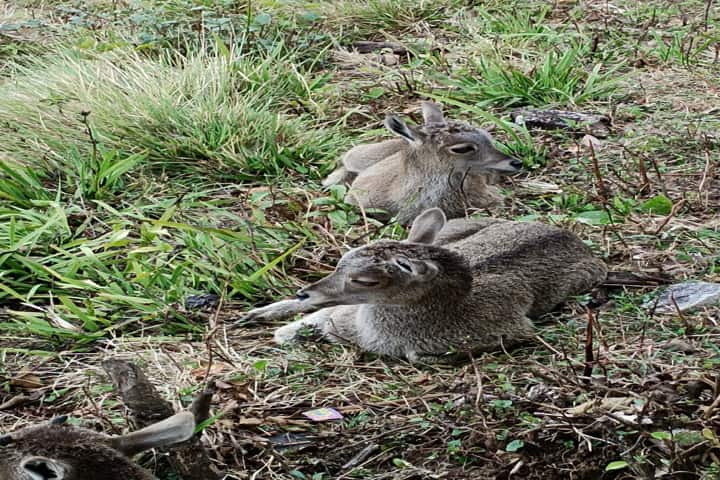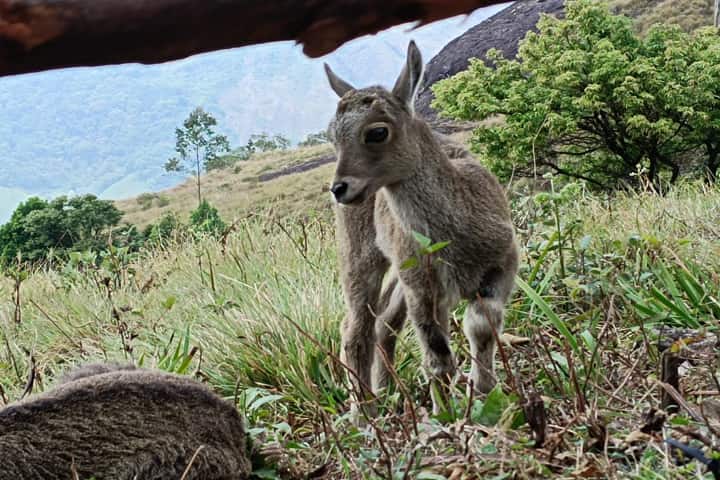There was good news for the conservationists and wildlife lovers in India with the release of the document “Population Estimation of Nilgiri Tahr in the Munnar Wildlife Division-2023”. The endemic and endangered species has registered an increase in numbers with their population growing gradually in Kerala’s Eravikulam National Park due to the efforts of the State Forest Department.
Incidentally, Nilgiri tahr is the state animal of Tamil Nadu.
Project Nilgiri Tahr of #TNForest aims to restore the fragmented habitat especially Shola grasslands where it thrives, reintroduce the Tahr population in its historic habitat and ensure proper rehabilitation facilities are provided #NilgiriTahr. footage- Senthil Natarajan pic.twitter.com/dYLTtuCc7L
— Supriya Sahu IAS (@supriyasahuias) December 28, 2022
The copy of the report which India Narrative has access to, shows that ENP consisting of 13 of the 18 blocks of MWD is the prime habitat of Nilgiri tahr and has 803 of these animals including 128 young ones. Last year this figure was 785 which included 118 newborn.
The two other areas in MWD, namely Chinnar Wildlife Sanctuary and Shola National Park have 68 and 22 Nilgiri tahr with 7 and 4 newborn, respectively.
Talking to India Narrative, Job N. Neriamparambil , Assistant Wildlife Warden, ENP said: “The numbers have more or less remained steady.”
On being asked the reason, he explained to IN: “Eravikulam National Park is having prey as well as the predators. We have enough tigers, leopards and wild dogs. They mainly prey on Nilgiri tahr during the calving season and so in the February-March period around 60 per cent of the newborn are caught by the predators. So, the population remains stable.”
The Forest Department has ensured that the habitat of Nilgiri tahr with its high-altitude cliffs and grassland, remains intact. They protect the landscape by constantly checking for invasive plant species and preventing their spread. Those plants that are not eaten by these creatures are kept away thereby securing their food.
Elaborating on the threats and how the authorities are meeting them for India Narrative, Neriamparambil said: “Currently we don’t have any direct threats even though they were present in the past. Previously we had illicit felling of trees, encroachment, ganja cultivation, and also poaching. All this has not been reported for more than 15 years. The reason for this is because we have four tribal settlements in the border areas of the National Park and the people dwelling in them are from the Muthuvan tribe. Around 100 from them are engaged in the National Park for tourism and protection purposes. As they are getting enough income from the sanctuary, they are convinced that the existence of this Nilgiri tahr national park is a must for their livelihood.”
He added that apart from these tribals, another 70 non-tribals dwelling in the fringe areas are employed with the national park.

“We have created a good social fence around the park and if anyone enters it or if there is any illicit activity, it will be reported immediately. The protection is carried out with the help of these people whom we call eco-development committee members,” Neriamparambil said.
The enumeration, done from April 25 to 28, is an annual event and involved apart from the officials of the Forest Department, volunteers from College of Forestry and non-governmental organisation MEWS. MWD was divided into blocks and each block had its own census team. In some cases, blocks with a larger area to cover had more than one team.
Nilgiri tahr is an even-toed ungulates, more allied to the true sheep and is endemic to the Shola grassland ecosystem of Western Ghats. Its distribution is limited to the Western Ghats in South India, Kerala and Tamil Nadu.
The International Union for Conservation of Nature has categorised these creatures as Endangered in 2008 and they are listed in the Schedule I of Wildlife Protection Act 1972 which provides them special protection status in India.




















